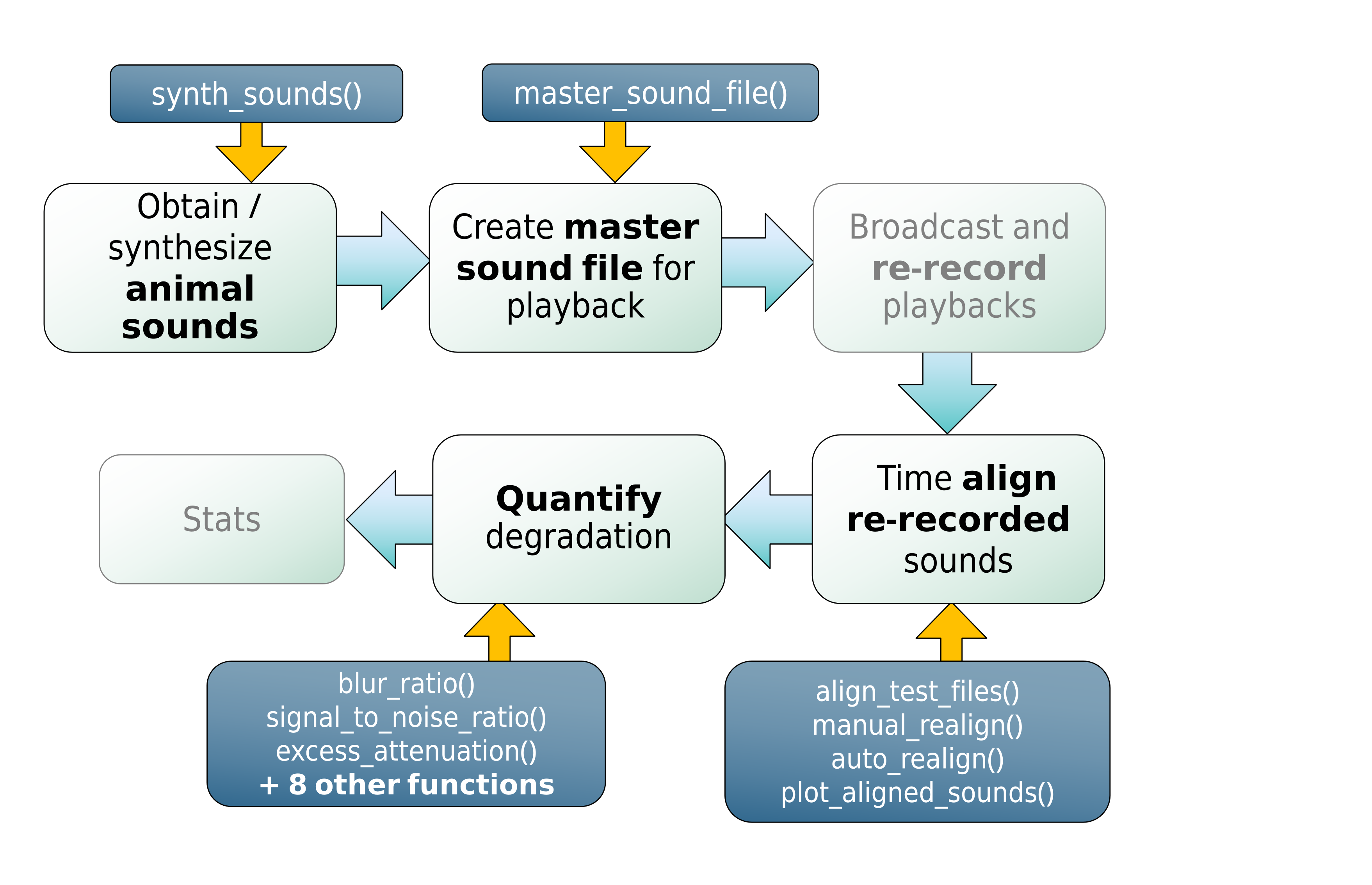


The hardware and bandwidth for this mirror is donated by dogado GmbH, the Webhosting and Full Service-Cloud Provider. Check out our Wordpress Tutorial.
If you wish to report a bug, or if you are interested in having us mirror your free-software or open-source project, please feel free to contact us at mirror[@]dogado.de.

baRulho is intended to facilitate the implementation of (animal) sound propagation experiments, which typically aim to quantify changes in signal structure when transmitted in a given habitat by broadcasting and re-recording animal sounds at increasing distances.
These experiments aim to answer research questions such as:
A common sequence of steps to experimentally test hypotheses related to sound propagation is depicted in the following diagram:

Diagram depicting a typical workflow for a experiment working on signal propagation and degradation. Nodes with black font indicate steps that can be conducted using baRulho functions. Blue nodes denote the functions that can be used at those steps.
baRulho offers functions for critical steps in this workflow (those in black, including ‘checks’) that required acoustic data manipulation and analysis.
The main features of the package are:
baRulho builds upon functions and data formats from the warbleR and seewave packages, so some experience with these packages is advised.
Take a look at the vignettes for an overview of the main features of the packages:
Install/load the package from CRAN as follows:
# From CRAN would be
# install.packages("baRulho")
# load package
library(baRulho)It can also be install from R-Universe in this way:
install.packages("baRulho", repos = "https://ropensci.r-universe.dev")## Installing package into '/home/marce/R/x86_64-pc-linux-gnu-library/4.3'
## (as 'lib' is unspecified)To install the latest developmental version from github you will need the R package remotes:
# install remotes if not installed
if (!requireNamespace("remotes")) {
install.packages("remotes")
}
# From github
remotes::install_github("ropensci/baRulho")
# load package
library(baRulho)Further system requirements due to the dependency seewave may be needed.
The packages seewave and tuneR provide a huge variety of functions for acoustic analysis and manipulation. They mostly work on wave objects already imported into the R environment. The package warbleR provides functions to visualize and measure sounds already referenced in annotation tables, similar to baRulho. The package Rraven facilitates the exchange of data between R and Raven sound analysis software (Cornell Lab of Ornithology) and can be very helpful for incorporating Raven as the annotating tool into acoustic analysis workflow in R. The package ohun works on automated detection of sound events, providing functions to diagnose and optimize detection routines.
Please cite baRulho as follows:
Araya-Salas M., E. Grabarczyk, M. Quiroz-Oliva, A. Garcia-Rodriguez, A. Rico-Guevara. (2023), baRulho: an R package to quantify degradation in animal acoustic signals. bioRxiv 2023.11.22.568305.
Dabelsteen, T., Larsen, O. N., & Pedersen, S. B. (1993). Habitat-induced degradation of sound signals: Quantifying the effects of communication sounds and bird location on blur ratio, excess attenuation, and signal-to-noise ratio in blackbird song. The Journal of the Acoustical Society of America, 93(4), 2206.
Marten, K., & Marler, P. (1977). Sound transmission and its significance for animal vocalization. Behavioral Ecology and Sociobiology, 2(3), 271-290.
Morton, E. S. (1975). Ecological sources of selection on avian sounds. The American Naturalist, 109(965), 17-34.
These binaries (installable software) and packages are in development.
They may not be fully stable and should be used with caution. We make no claims about them.
Health stats visible at Monitor.